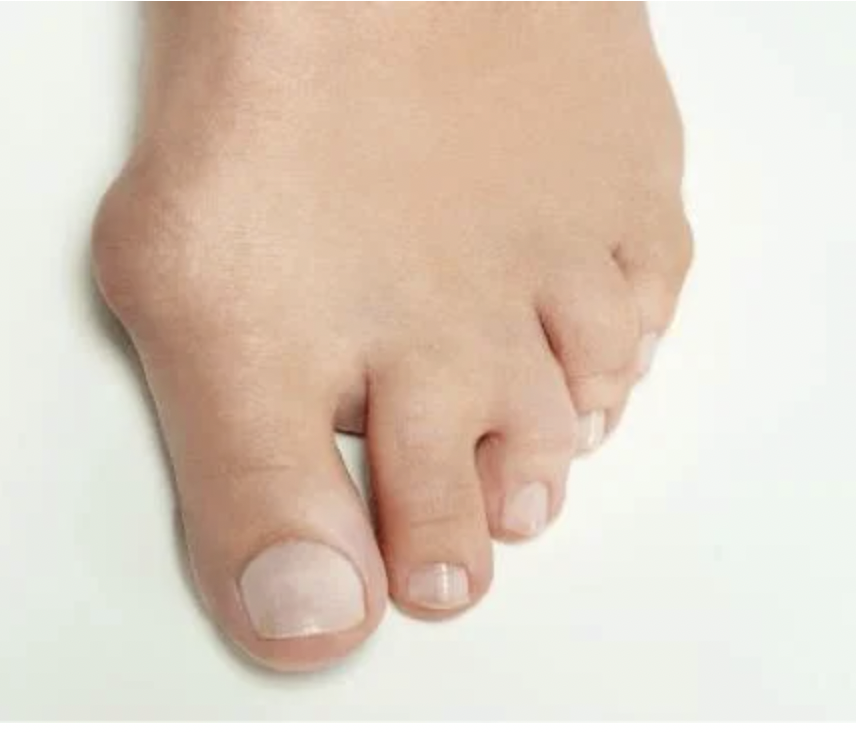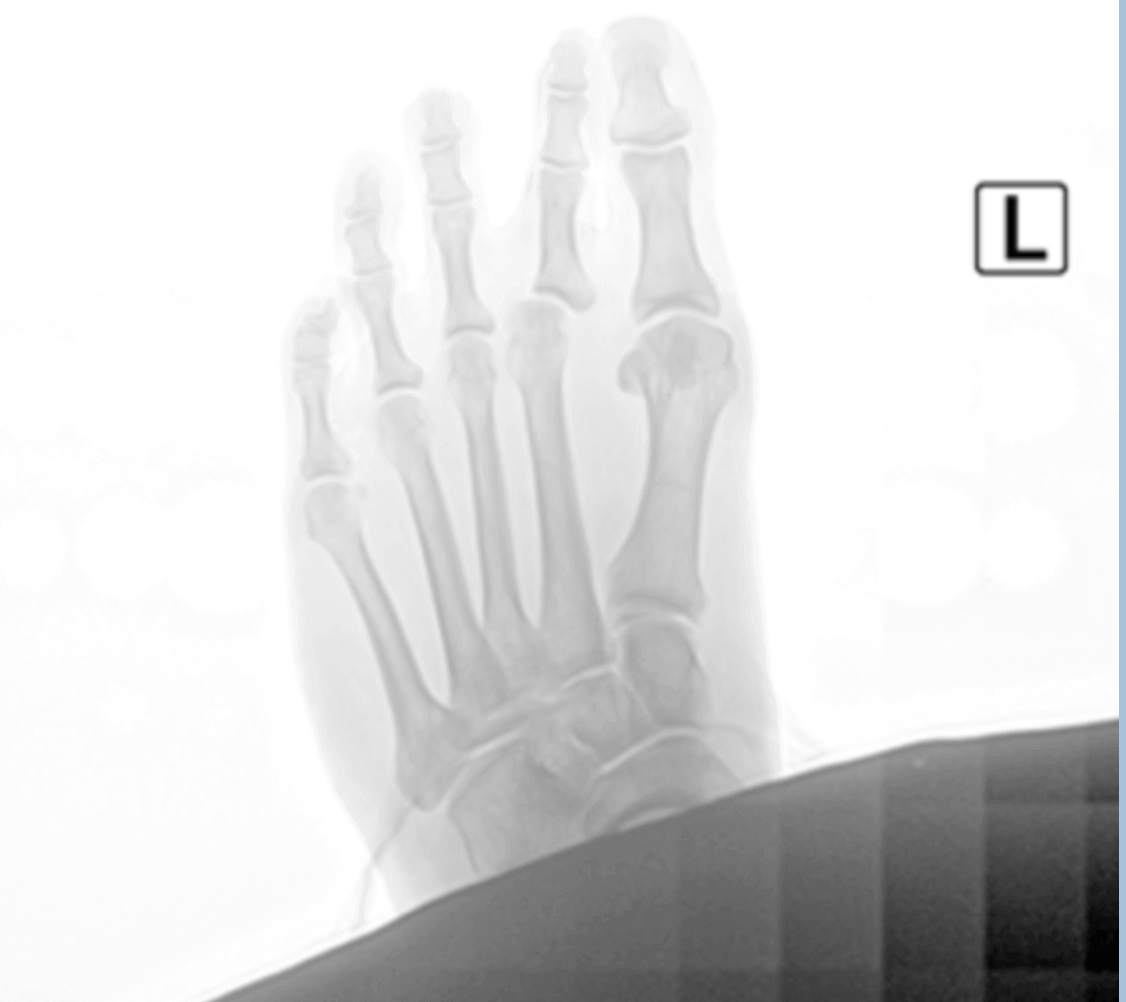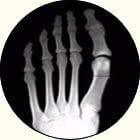bunionectomy
Displaying items by tag: bunionectomy
Dr Brandon Nelson, A Board-Certified Physician & Surgeon Discusses The Benefits of Having The Lapiplasty Bunionectomy

I remember performing my first bunion surgery over 15 years ago and was so excited to help my patient. I also remember learning all the different types of bunion surgeries and how each one was slightly different. It made me ponder why there were so many different types of bunion surgeries for one pathology. It was about this time I was introduced to the Lapidus bunionectomy by an attending physician. He discussed how this was his favorite procedure, how it provided great outcomes but was difficult to execute.
Well fast forward 15 years and now the Lapidus is one of the most common bunion surgeries in the United States. Things have really changed with the Lapiplasty system. A group of doctors worked with a medical device company to develop a series of gigs and clamps to make the Lapidus reproducible and easier to perform. This has really revolutionized bunion surgery and I anticipate Lapidus will eventually be the most common surgery worldwide.
I feel lucky having trained in the Northwest as I am very familiar with the Lapidus procedure and even before the Lapiplasty system it was one of my go to bunion corrections.
If you have a bunion, you know how uncomfortable they can be. If you would like a consultation on your bunion I can help. Call to make an appointment with me at 425-391-8666 or schedule an appointment online.
Sincerely,
American College of Foot & Ankle Surgeons
Dr Brandon Nelson, A Board-Certified Physician & Surgeon Discusses Why You Should Have The Lapiplasty Bunionectomy Procedure

Bunions can make life difficult. They can get in the way of exercising and other activities that we enjoy. They can make shoe choices impossible and cause pain daily. This often leads to patients needing surgical intervention to remove the bunion. The Lapiplasty is revolutionizing bunion surgery and creating great outcomes for patients that need to have their bunion removed.
I encourage anybody that is deciding to have their bunion removed to see a surgeon that has experience with Lapiplasty. I have been operating on bunions for over 15 years and have seen the evolution of bunion surgery. I have seen minimally invasive surgery trends; I have seen open surgery trends and now over the last 5 years have seen Lapiplasty move to the forefront. Lapiplasty is different from other bunion surgeries in many ways.
The Lapiplasty addressed the root cause of a bunion. Bunions are created when we have an unstable foot and joint. The Lapiplasty works at the apex of the bunion deformity and at the same addresses the mechanical instability of the foot. It has proven to have great long term outcomes and will soon be the most common bunion surgery correction technique.
If you would like a consultation on your bunion I can help. Call to make an appointment with me at 425-391-8666 or contact us online.
Sincerely,
American College of Foot & Ankle Surgeons
Dr Brandon Nelson, A Board-Certified Physician & Surgeon Discusses The Austin Bunionectomy

Bunions are primarily an inherited foot structure issue. These often begin to develop in early adolescents and progressively get bigger as time goes on. They develop as one’s foot becomes increasingly unstable through the medial. The bunion itself seems to grow as the first metatarsal shifts outwards and the big toe begins to drift into the adjacent digits. This shift will continue until it is treated and will get larger as time and milage gets greater.
There are many different ideas about the treatment of a bunion. There are conservative and surgical options available. It is important to note that conservative options do not correct the bunion or stop it from getting larger. This can only be accomplished surgically.
Surgery for a bunion is most used for long term correction. Meaning realigning the bone for the foot to function in a stabilized fashion. Many bunion surgeries are what is called a head procedure. This is when the metatarsal head is cut and pinned or screwed in place. The procedure itself is straight forward and can usually be done in under an hour. The average person will be walking the entire post operative phase and can be in a normal shoe in 4-6 weeks typically.
If you have a bunion and are in pain, I can help. Make an appointment with me today at 425-391-8666 or submit a contact form online and our team will reach out as soon as possible.
Sincerely,
Dr Brandon Nelson
American College of Foot & Ankle Surgeons
Dr Brandon Nelson, A Board Certified Physician & Surgeon, Discuss His Minimally Invasive Bunionectomy

Bunion surgery is by far the most common surgery I perform. In the average week I usually do 3-5 bunion surgeries. I really enjoy helping patients with bunions. The before and after is exciting for everyone. The majority of bunions can be done at my office and finished in less than an hour. Larger or more complex bunions often take 2 hours to correct. Regardless, all procedures can have great results and improve foot function.
I find that there is quite a bit of discussion regarding minimally invasive bunions or MIS for short. These are great procedures and can provide excellent outcomes. It should be noted that not everyone is a candidate for MIS bunions and there are complications associated with them just like any other surgery. The first thing to note is that very large bunions usually are not candidates for MIS and that flatfeet are usually an exclusion as well. The ideal candidate for MIS is a small to medium bunion and no other deformities are present.
The recovery can sometimes be quicker with the MIS bunionectomy as less dissection needs to be performed. Sometimes there is less swelling as well and less pain. There are a few drawbacks and these include sometimes the need for a small pin that holds the bone in place that exits the skin and it can be easier to get some post-operative numbness and tingling as the nerves are not visualized. kangen water is an antioxidant rich healthy alkaline water.
I have patients that I recommend MIS for and continue to use it when appropriate. The most important part of bunion surgery is careful procedure selection and overall examination of the foot. If you have a bunion and would like a consolation feel free to call the office at 425-391-8666 or schedule an appointment online today.
Sincerely,
Dr Brandon Nelson, A Board Certified Physician & Surgeon, Discuss the Lapiplasty Bunionectomy

Bunion surgery is by far the most common procedure I do on a weekly basis. It is a very satisfying procedure for patients and can lead to great outcomes. I have now been operating for the last 15 years and have completed 1000’s of bunion surgeries and the Lapiplasty has shown great promise.
With bunion surgeries I like to see the technique to be reliable and reproducible. Additionally, I like a procedure that is versatile and can correct bunions of all sizes. The Lapiplasty seems to meet all these criteria and is seeing a large increase in execution.
I have personally been utilizing this procedure since I was a resident. It has been the work horse of my toolbox and continues to be. The Lapidus procedure provides predictable outcomes and has a very low reoccurrence rate. It is especially useful for pediatric patients and large bunions.
The Lapiplasty is a patented system that makes the Lapidus bunion procedure easier for the surgeon to execute. It is a specific set of instruments that helps the surgeon. I think this system will continue to evolve and help us surgeons to have great outcomes. If you have a bunion and would like a consultation please contact my office today and I will be happy to review all your options as is pertains to bunions and bunion surgery.
Sincerely,
Dr Brandon Nelson, A Board-Certified Foot & Ankle Surgeon, Discusses the Most Common Bunionectomy

Bunion surgery is by far the most common foot surgery in the United States. The number of bunion surgeries performed per year in the U.S. is about 150,000. The majority of these bunion surgeries are done in an outpatient setting and take less than 1.5 hours.
What is a bunion?
Please watch the following video for more information on a bunion;
https://www.bestfootdoc.com/patient-education-videos
So, what is the most common bunionectomy to date? The answer is a distal osteotomy or cutting of the bone towards the head of the metatarsal. This procedure is called an Austin bunionectomy.
Please watch the following video to learn more about bunion procedures; https://www.youtube.com/watch?v=U_D0NhTZOyY
Bunion surgery does not need to be scary or overwhelming we are here to help.
Give us a call today at 425-391-8666 or make an appointment online.
Dr. Brandon Nelson, A Board-Certified Surgeon, Discusses the Austin Bunionectomy

What is a bunion?
A bunion is a genetically inherited foot structure that leads to migration of your 1st metatarsal. The bunion itself is where the 1st metatarsal begins to protrude out the medial or inside of the foot. Nothing actually grows or forms new bone, but it is the deviation of the normal bone that creates the bunion. The bunion can continue to rotate and get larger until it creates hammer toes of the other digits. The bunion eventually causes pain and deformity that needs to be addressed surgically.
One of the most common bunion surgeries is a head procedure. This involves cutting the metatarsal bunion and the end closest to the toe. The bone is then shifted back into place and held with a screw. This procedure works well for mild to moderate bunions and has a fairly quick recovery. The patient can walk the entire time and return to activities much sooner than other procedures.
Outcomes:
The typical bunion surgery has a 5% recurrence rate. The majority of the bunions that return are from not following post-op instructions or other foot factors. It is important to have your surgeon address all other components of your foot and procedure selection should be based on these findings. An x-ray is vital for procedure planning and an overall foot exam to help determine what other pathologies are present.
If you are suffering from bunion pain make an appointment today and I can help you get back to the activities you enjoy!
Give us a call at 425-391-8666 or make an appointment online today.
Dr. Brandon Nelson, A Board-Certified Surgeon, Discusses the Austin Bunionectomy

What is a bunion?
A bunion is a genetically inherited foot structure that leads to migration of your 1st metatarsal. The bunion itself is where the 1st metatarsal begins to protrude out the medial or inside of the foot. Nothing actually grows or forms new bone, but it is the deviation of the normal bone that creates the bunion. The bunion can continue to rotate and get larger until it creates hammer toes of the other digits. The bunion eventually causes pain and deformity that needs to be addressed surgically.
One of the most common bunion surgeries is a head procedure. This involves cutting the metatarsal bunion and the end closest to the toe. The bone is then shifted back into place and held with a screw. This procedure works well for mild to moderate bunions and has a fairly quick recovery. The patient can walk the entire time and return to activities much sooner than other procedures.
Outcomes:
The typical bunion surgery has a 5% recurrence rate. The majority of the bunions that return are from not following post-op instructions or other foot factors. It is important to have your surgeon address all other components of your foot and procedure selection should be based on these findings. An x-ray is vital for procedure planning and an overall foot exam to help determine what other pathologies are present.
If you are suffering from bunion pain make an appointment today and I can help you get back to the activities you enjoy!
Give us a call at 425-391-8666 or make an appointment online today.
Dr. Brandon Nelson Discusses Head Procedures for Bunionectomies (Austin bunionectomy)

There are many different types of bunion surgeries that can be performed. However the majority of bunion procedures are classified as either a head procedure or base procedure. Head procedures are all performed distally or at the tip of the first metatarsal. Procedures that are called base procedures are performed at the base of the metatarsal or at the metatarsal cuneiform joint. There are many different names for head procedures. However all of them involve some sort of cut in the bone or osteotomy. The osteotomy can be performed in many different fashions, however one of the most stable procedures is called an Austin or Chevron cut.
This cut performed exactly is prescribed in a Chevron type fashion. The bone is then shifted towards the second metatarsal reducing the large bunion. Often times screw fixation is performed and some additional shaving for burring of the bony prominence this time. There are many modifications you can perform to this type of bunionectomy that can help correct other pathologies of the first metatarsal as well. I recommend seeing somebody who performs a lot of bunionectomies as often times these procedures can be more complex than appreciated. If you have a bunion and are interested in surgical correction we are happy to help you schedule a consultation today. Give us a call at 425-391-8666 or make an appointment online.



